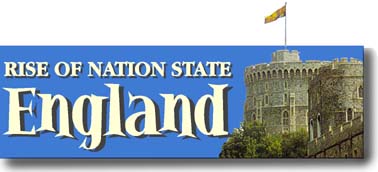
|


|
|
|
Mr. Sedivy's
More Features:
|
Highlands Ranch High School - Mr. Sedivy Rise of Nation State England The Hammer of the Scots Alexander III John Balliol, Lord of Galloway The Scots hated this English interference and finally forced John to go against Edward's wishes. Edward's answer was to gather an army, march into Scotland, and force Balliol to give up the throne in 1296. William Wallace Edward marched north to teach the Scots the lesson he had taught the Welsh. His army contained a strong force of arches armed with longbows. These deadly weapons, up to two meters high, could fire iron-tipped arrows through chain mail. Edward's archers quickly settled the issue at the battle of Falkirk. The following year Wallace was captured, after seven years on the run. William Wallace was taken to London and hanged. Robert I Bruce (1306 - 1329)
King Edward II (1307 - 1327)
Just before the old King's death the tide turned for Bruce, support flocked to his side and he began to win battle and skirmishes against the English. In later years, a story was told of how he had been ready to give up the struggle as he sat one day in a cave, watching a spider try to make its web. One by one, he captured English-held castles. Edward II could not let Stirling fall without a fight. In 1314, he crossed the Border with about 20,000 men. Bruce's army was outnumbered by three to one, but was well-placed. After suffering heavy losses, the English fled in disorder. King Edward III (1327 - 1377)
Edward I's plan to unite both crowns would have to
wait 300 years until 1603. Until then, the both countries would
go on quarreling and fighting. Mr. Sedivy's Lecture Notes & Historical Info The Celts - Rise of Nation State England - Wales and Scotland The 100 Years War More Information Class Activities Related Information
|
Highlands Ranch High School ![]() 9375 South Cresthill Lane
9375 South Cresthill Lane ![]() Highlands Ranch, Colorado 80126
Highlands Ranch, Colorado 80126 ![]() 303-471-7000
303-471-7000
Mr. Sedivy's History Classes
| Colorado History | American
Government | Advanced Placement Modern European
History | Rise of Nation State England | World
History |
| Home | Back to top of page |
Site Contents |






